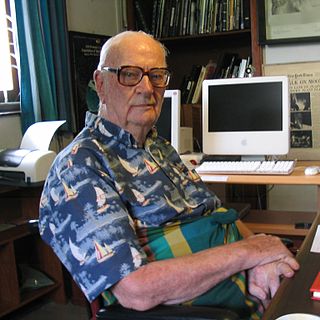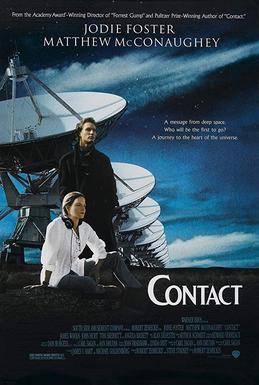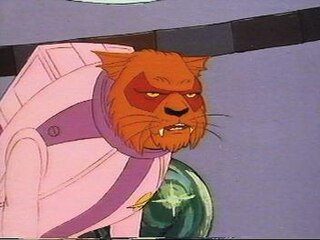Related Research Articles

Hard science fiction is a category of science fiction characterized by concern for scientific accuracy and logic. The term was first used in print in 1957 by P. Schuyler Miller in a review of John W. Campbell's Islands of Space in the November issue of Astounding Science Fiction. The complementary term soft science fiction, formed by analogy to hard science fiction, first appeared in the late 1970s. The term is formed by analogy to the popular distinction between the "hard" (natural) and "soft" (social) sciences, although there are examples generally considered as "hard" science fiction such as Isaac Asimov's Foundation series, built on mathematical sociology. Science fiction critic Gary Westfahl argues that neither term is part of a rigorous taxonomy; instead they are approximate ways of characterizing stories that reviewers and commentators have found useful.

Laurence van Cott Niven is an American science fiction writer. His 1970 novel Ringworld won the Hugo, Locus, Ditmar, and Nebula awards. With Jerry Pournelle he wrote The Mote in God's Eye (1974) and Lucifer's Hammer (1977). The Science Fiction and Fantasy Writers of America gave him the 2015 Damon Knight Memorial Grand Master Award.
Known Space is the fictional setting of about a dozen science fiction novels and several collections of short stories by American writer Larry Niven. It has also become a shared universe in the spin-off Man-Kzin Wars anthologies. The Internet Speculative Fiction Database (ISFDB) catalogs all works set in the fictional universe that includes Known Space under the series name Tales of Known Space, which was the title of a 1975 collection of Niven's short stories. The first-published work in the series, which was Niven's first published piece, was "The Coldest Place", in the December 1964 issue of If magazine, edited by Frederik Pohl. This was the first-published work in the 1975 collection.

Ringworld is a 1970 science fiction novel by Larry Niven, set in his Known Space universe and considered a classic of science fiction literature. Ringworld tells the story of Louis Wu and his companions on a mission to the Ringworld, a rotating wheel artificial world, an alien construct in space 186 million miles in diameter. Niven later added three sequel novels and then cowrote, with Edward M. Lerner, four prequels and a final sequel; the five latter novels constitute the Fleet of Worlds series. All the novels in the Ringworld series tie into numerous other books set in Known Space. Ringworld won the Nebula Award in 1970, as well as both the Hugo Award and Locus Award in 1971.
Superluminal communication is a hypothetical process in which information is conveyed at faster-than-light speeds. The current scientific consensus is that faster-than-light communication is not possible, and to date it has not been achieved in any experiment.

The Kzinti are a fictional, warlike, and bloodthirsty race of cat-like aliens in Larry Niven's Known Space series.

Contact is a 1997 American science fiction drama film directed by Robert Zemeckis, based on the 1985 novel by Carl Sagan. Sagan and his wife Ann Druyan wrote the story outline for the film. It stars Jodie Foster as Dr. Eleanor "Ellie" Arroway, a SETI scientist who finds evidence of extraterrestrial life and is chosen to make first contact. It also stars Matthew McConaughey, James Woods, Tom Skerritt, William Fichtner, John Hurt, Angela Bassett, Rob Lowe, Jake Busey, and David Morse. It features the Very Large Array in New Mexico, the Arecibo Observatory in Puerto Rico, the Mir space station, and the Space Coast surrounding Cape Canaveral.

Captain Star is a 1997 animated television series created by Steven Appleby and is based on Appleby's comic Rockets Passing Overhead. It stars Richard E. Grant as the voice of Captain Jim Star. The show was produced by Cosgrove Hall Films and HTV.

An Alderson disk is a hypothetical artificial astronomical megastructure, like Larry Niven's Ringworld and the Dyson sphere. The disk is a giant platter with a thickness of several thousand miles. The Sun rests in the hole at the center of the disk. The outer perimeter of an Alderson disk would be roughly equivalent to the orbit of Mars or Jupiter. According to the proposal, a sufficiently large disk would have a larger mass than its Sun.
"Neutron Star" is an English language science fiction short story by American writer Larry Niven. It was originally published in the October 1966 issue of Worlds of If. It was later reprinted in the collection of the same name and Crashlander. The story is set in Niven's fictional Known Space universe. It is notable for including a neutron star before their existence was widely known.

Protector is a 1973 science fiction novel by American writer Larry Niven, set in his Known Space universe. It was nominated for the Hugo in 1974, and placed fourth in the annual Locus poll for that year.

Inconstant Moon is a science fiction short story collection by American author Larry Niven that was published in 1973. "Inconstant Moon" is also a 1971 short story that is included in the collection. The title refers to "O, swear not by the moon, th' inconstant moon", a quote from the balcony scene in William Shakespeare's Romeo and Juliet. The collection was assembled from the US collections The Shape of Space and All the Myriad Ways.

"The Slaver Weapon" is the fourteenth episode of the first season of the American animated science fiction television series Star Trek: The Animated Series. It first aired on NBC on December 8, 1973, and was written by Larry Niven. It was based on his original short story "The Soft Weapon". This episode was expanded to become the first half of a full-length novel by science-fiction author Alan Dean Foster as Star Trek Log Ten.

Mind uploading, whole brain emulation, or substrate-independent minds, is a use of a computer or another substrate as an emulated human brain. The term "mind transfer" also refers to a hypothetical transfer of a mind from one biological brain to another. Uploaded minds and societies of minds, often in simulated realities, are recurring themes in science-fiction novels and films since the 1950s.
"The Return of William Proxmire" is a short story by Larry Niven first published in 1989 in the anthology What Might Have Been? Volume 1: Alternate Empires, edited by Gregory Benford.

"The Borderland of Sol" is a science fiction novelette by American writer Larry Niven. It is the fifth in the Known Space series of stories about crashlander Beowulf Shaeffer.
The Tunguska event was an explosion that occurred on 30 June 1908, in the Siberian region of Russia, possibly caused by a meteor air burst. The event has inspired much speculation and appears in various fictional works.

The Sky People is an alternate history science fiction novel by American writer S. M. Stirling. It was first published by Tor Books in hardcover in November 2006, with a book club edition co-published with the Science Fiction Book Club following in December of the same year. Tor issued paperback, ebook, and trade paperback editions in October 2007, April 2010, and May 2010 respectively. Audiobook editions were published by Tantor Media in January 2007.
This is a complete bibliography by American science fiction author Larry Niven:
References
- ↑ Strahan, Jonathan (March 30, 2009). "The All-Time Top 40: The Hole Man, Larry Niven" . Retrieved 2020-07-10.